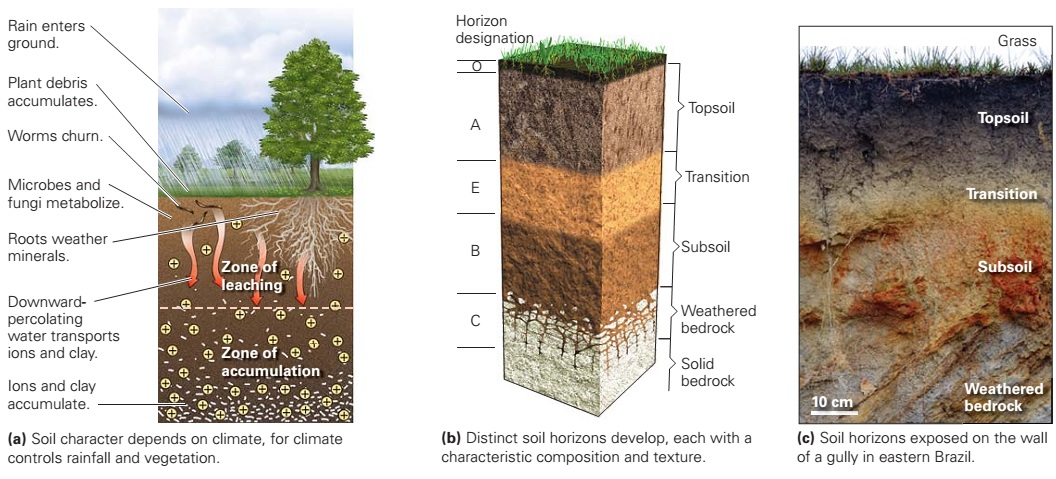10 terms Bill_Cavalieri Preview Rocks and the Rock Cycle Quiz (100%) 10 terms manugavassi45 Preview Rocks and the Rock Cycle 10 terms erika_rose169 Preview science 5 terms avaisthebest47 Preview Rocks & Minerals: Igneous Rocks Teacher 44 terms gatorbrown27
Learning Geology: Soil
Question Which statement describes the relationship between minerals and rocks? a). Minerals and rocks are the same. b). Aggregates of minerals form rocks. c). Minerals determine the texture of a rock. d). Most rocks are made of a single mineral type. Expert Solution Trending now This is a popular solution! Step by step Solved in 2 steps

Source Image: dedalostone.com
Download Image
More related questions environmental science What is the difference between rocks and minerals? Between metals and nonmetallic minerals? geography Which of these statements best describes the relationship difference between minerals and rocks? A. most minerals are made of rocks B. most rocks are made of minerals

Source Image: mdpi.com
Download Image
Zarautsoy Rock Paintings – Wikipedia Nov 21, 2023Mineral Definition Rock Definition Is a Rock a Mineral? Lesson Summary Rocks Versus Minerals Rocks are different from minerals, but both are solids and can be found in the earth’s

Source Image: geologyin.com
Download Image
Which Statement Describes The Relationship Between Minerals And Rocks
Nov 21, 2023Mineral Definition Rock Definition Is a Rock a Mineral? Lesson Summary Rocks Versus Minerals Rocks are different from minerals, but both are solids and can be found in the earth’s 1.4 Minerals and Rocks. The rest of this chapter is devoted to a brief overview of a few of the important aspects of physical geology, starting with minerals and rocks. This is followed by a review of Earth’s internal structure and the processes of plate tectonics, and an explanation of geological time. Like everything else in the universe
How Do Geologists Identify Minerals? – Geology In
Answer 5 people found it helpful brigidiac53 report flag outlined Answer: b Explanation: Still have questions? Find more answers plus Ask your question You might be interested in verified Verified answer School of Rocks: Minerals, Fossils, Meteorites With Yinan Wang – Atlas Obscura Experiences

Source Image: atlasobscura.com
Download Image
Fossilisation processes and our reading of animal antiquity: Trends in Ecology & Evolution Answer 5 people found it helpful brigidiac53 report flag outlined Answer: b Explanation: Still have questions? Find more answers plus Ask your question You might be interested in verified Verified answer

Source Image: cell.com
Download Image
Learning Geology: Soil 10 terms Bill_Cavalieri Preview Rocks and the Rock Cycle Quiz (100%) 10 terms manugavassi45 Preview Rocks and the Rock Cycle 10 terms erika_rose169 Preview science 5 terms avaisthebest47 Preview Rocks & Minerals: Igneous Rocks Teacher 44 terms gatorbrown27

Source Image: geologylearn.blogspot.com
Download Image
Zarautsoy Rock Paintings – Wikipedia More related questions environmental science What is the difference between rocks and minerals? Between metals and nonmetallic minerals? geography Which of these statements best describes the relationship difference between minerals and rocks? A. most minerals are made of rocks B. most rocks are made of minerals

Source Image: en.wikipedia.org
Download Image
Lichen: The Threesome – National Geographic Education Blog Aug 28, 20221.28 Elements, minerals, and rocks. This figure (1.28) shows the relationships between elements (bottom), minerals (center), and rocks (top). Elements, singly or in combination, make up minerals. For example, some of the most common elements in Earth’s crust make up the minerals quartz, alkali-feldspar, and biotite.

Source Image: blog.education.nationalgeographic.org
Download Image
Science: Types of Rocks and Grouping Rocks (teacher made) Nov 21, 2023Mineral Definition Rock Definition Is a Rock a Mineral? Lesson Summary Rocks Versus Minerals Rocks are different from minerals, but both are solids and can be found in the earth’s

Source Image: twinkl.co.uk
Download Image
Which statement describes the relationship between minerals and rocks? Minerals and rocks are the same. – Brainly.in 1.4 Minerals and Rocks. The rest of this chapter is devoted to a brief overview of a few of the important aspects of physical geology, starting with minerals and rocks. This is followed by a review of Earth’s internal structure and the processes of plate tectonics, and an explanation of geological time. Like everything else in the universe

Source Image: brainly.in
Download Image
Fossilisation processes and our reading of animal antiquity: Trends in Ecology & Evolution
Which statement describes the relationship between minerals and rocks? Minerals and rocks are the same. – Brainly.in Question Which statement describes the relationship between minerals and rocks? a). Minerals and rocks are the same. b). Aggregates of minerals form rocks. c). Minerals determine the texture of a rock. d). Most rocks are made of a single mineral type. Expert Solution Trending now This is a popular solution! Step by step Solved in 2 steps
Zarautsoy Rock Paintings – Wikipedia Science: Types of Rocks and Grouping Rocks (teacher made) Aug 28, 20221.28 Elements, minerals, and rocks. This figure (1.28) shows the relationships between elements (bottom), minerals (center), and rocks (top). Elements, singly or in combination, make up minerals. For example, some of the most common elements in Earth’s crust make up the minerals quartz, alkali-feldspar, and biotite.